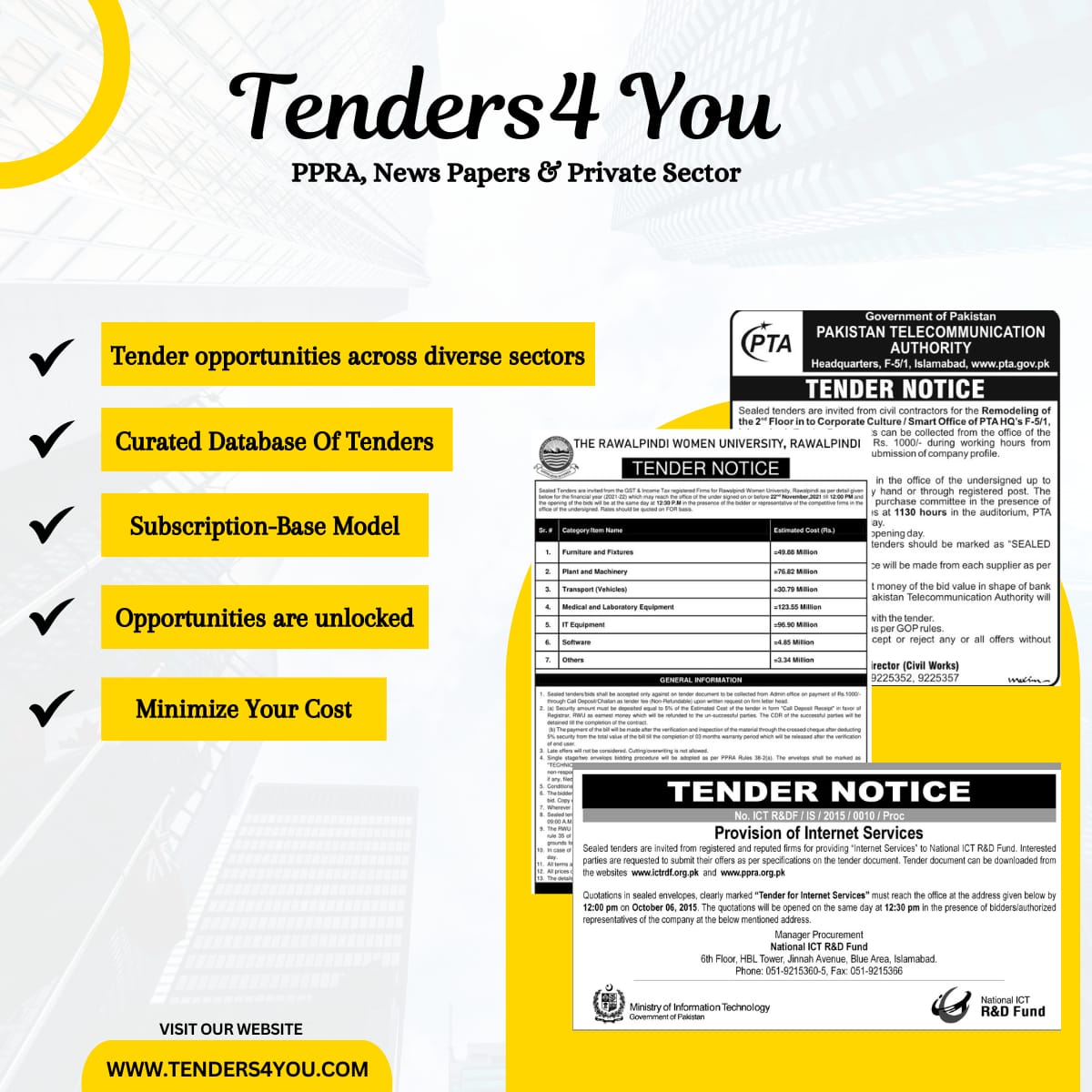In today’s fast-paced business environment, staying ahead of the competition is crucial. One key aspect is securing lucrative contracts through tenders. A tender notice serves as an official announcement by an organization or government body inviting bids for projects or procurements. In this comprehensive guide, we delve into the intricate details of tender notices, providing valuable insights for businesses looking to enhance their bidding strategies and increase their chances of winning contracts.
Understanding Tender Notices
A tender notice is more than just an announcement; it’s a critical document that outlines the requirements, conditions, and deadlines for a specific project. These notices are typically published in newspapers, official websites, or specialized tender platforms. They are designed to ensure transparency and fairness in the procurement process.
Key Components of a Tender Notice
Tender notices generally contain several key elements:
- Project Description: A detailed overview of the project or procurement, including its scope and objectives.
- Eligibility Criteria: Specific qualifications or conditions that bidders must meet to be considered.
- Submission Guidelines: Instructions on how to prepare and submit a bid, including format and required documentation.
- Evaluation Criteria: The standards by which bids will be assessed and selected.
- Deadline: The final date and time by which bids must be submitted.
Types of Tender Notices
There are various types of tender notices, each catering to different procurement needs:
- Open Tenders: Open to all qualified bidders, promoting wide participation and competition.
- Selective Tenders: Limited to a pre-selected group of bidders, often used for more complex projects.
- Negotiated Tenders: Involve direct negotiation with one or more suppliers, typically for highly specialized requirements.
- Single-Source Tenders: Awarded without competition, usually in cases of urgency or when only one supplier is available.
How to Respond to a Tender Notice
Responding to a tender notice requires a strategic approach and meticulous preparation. Here are the steps to follow:
1. Thoroughly Read the Tender Notice
Understanding the tender notice in its entirety is the first step. Pay close attention to the eligibility criteria, submission guidelines, and evaluation criteria. This will help in determining whether your organization is a good fit for the project.
2. Gather Necessary Documentation
Prepare all the required documents as specified in the tender notice. This typically includes financial statements, company profiles, certifications, and past project references. Ensuring that all documentation is complete and accurate is crucial for a successful bid.
3. Develop a Competitive Bid
Crafting a compelling bid involves more than just meeting the minimum requirements. Highlight your company’s unique strengths and relevant experience. Present a clear and detailed plan for executing the project, demonstrating your understanding of the project’s objectives and your capability to deliver.
4. Submit Before the Deadline
Timely submission is essential. Late bids are usually disqualified, regardless of their quality. Ensure that your bid is submitted well before the deadline to avoid any last-minute issues.
Common Mistakes to Avoid
Even experienced bidders can make mistakes that jeopardize their chances of winning a tender. Here are some common pitfalls to avoid:
1. Incomplete Documentation
Failing to provide all required documents or submitting incomplete information can lead to disqualification. Double-check the tender notice to ensure you’ve included everything needed.
2. Ignoring the Evaluation Criteria
Understanding and addressing the evaluation criteria in your bid is critical. Tailor your bid to highlight how your proposal meets these criteria better than your competitors.
3. Overlooking Submission Guidelines
Each tender notice may have specific submission guidelines, including format and method of submission. Ignoring these guidelines can result in your bid being rejected.
4. Underestimating the Competition
In a competitive bidding environment, assuming that your bid will automatically stand out is a mistake. Conduct a thorough analysis of your competitors and strive to offer superior value.
Best Practices for Successful Bidding
Adopting best practices can significantly enhance your chances of winning tenders:
1. Stay Informed
Regularly monitor tender platforms and websites relevant to your industry. Staying updated on available opportunities allows you to be proactive in your bidding efforts.
2. Build Strong Relationships
Establish and maintain good relationships with potential clients and procurement officials. Networking can provide valuable insights and increase your chances of being invited to participate in selective tenders.
3. Invest in Proposal Development
Developing a high-quality bid requires time and resources. Consider investing in professional proposal writing services to ensure your bids are well-crafted and persuasive.
4. Learn from Feedback
Whether you win or lose a bid, seeking feedback is invaluable. Understanding the strengths and weaknesses of your proposal can help you improve future bids.
Conclusion
Navigating the world of tender notices can be challenging, but with the right approach and preparation, it offers immense opportunities for growth and success. By understanding the key components of tender notices, avoiding common mistakes, and adopting best practices, businesses can significantly enhance their chances of securing valuable contracts.





